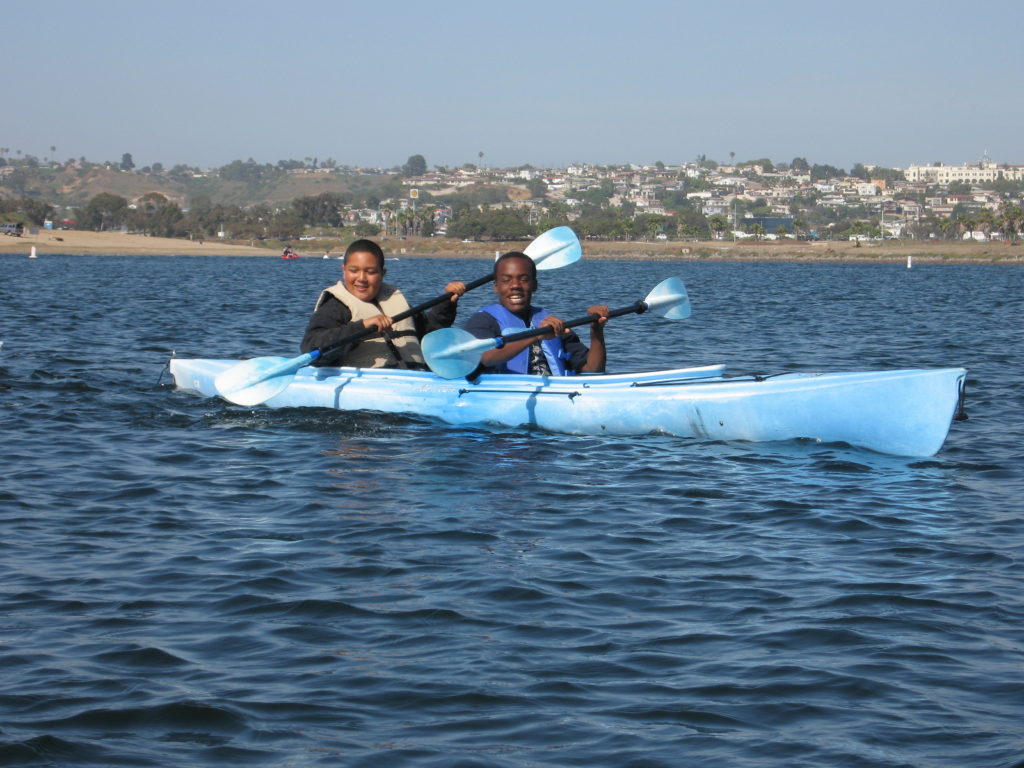
With summer in full swing, paddling is a great way to beat the heat. We reached out to our friends from Leave No Trace for tips on how your program can minimize it’s impact while encouraging participants to get out and paddle. They provided the 7 paddling specific Leave No Trace™ principles below.
Leave No Trace™ principles are simple guidelines to help you minimize your impacts when recreating in the outdoors. The seven principles of Leave No Trace™ are perfectly suited for your paddling adventures this summer! We bet there are a few things that never crossed your mind about ways you can minimize your impacts in the outdoors.
Plan Ahead and Prepare
There are a number of ways to plan and prepare for your trip on the water. Go through an equipment checklist before departing for the water. Your ‘kit’ should include everything you’ll need for the paddle experience. A not so obvious step in the planning process, though, is to look up the rules and regulations of the area you’ll be paddling. Almost every state park or federally managed land is going to boating regulations that will apply to you. Know them before you go out there.
Travel and Camp on Durable Surfaces
While water is considered a durable surface (surfaces that are minimally affected by humans traveling on them), the shoreline where you access the water way, or camping area just off shore, may not be. Take care to concentrate your footsteps and loading of watercraft to durable surfaces like concrete, rock, sand, gravel, and established trails. Aquatic plants, muddy banks, and marsh areas should be avoided as they are highly impacted by human (and pet!) footsteps and travel.
Dispose of Waste Properly
Pack it in, pack it out. Pack out all of your trash and uneaten food waste with you while paddling. Make sure that you are able to secure the trash in your vessel and keep it dry. Would you want to keep wet garbage in your boat? For those venturing into pristine areas or overnight camping, be sure to understand the human waste disposal regulations for the area where you are traveling.
Leave What You Find
You’re going to come across some amazing things while paddling! Shells, flowers, animals, oh my! The mantra for this guideline is, “fill your camera, not your boat.” Let photos, drawings and memories be your mementos from your paddling excursion. Help children investigate the role of natural objects in their own environments. Remind them that these things fill important ecological niches: a feather woven into the nest of an osprey; a frog finds shade under a piece of driftwood, and a snail’s shell becomes the home of a hermit crab. Objects in nature derive much of their beauty from their surroundings and never quite look the same back home.
Make sure that you’re taking the time to wash off your water craft, paddles, and PFDs when you’ve finished paddling for the day or on your trip. Invasive species of plants, animals, and microorganisms can (and do) cause large scale, irreversible changes to ecosystems by eliminating native species over time.
Minimize Campfire Impacts
If you are planning to have a campfire on your paddling trip, its best to know the fire regulations for where you’ll be traveling. Once you’ve determined that fires are allowed (check daily fire bans!), use dead, fall, small diameter wood in established fire rings to enjoy your campfire. If you’re cooking food on your paddling trip, ensure your kitchen success by cooking on a small camp stove.
Respect Wildlife
Avoid sensitive times and habitats for certain aquatic or terrestrial animals. Animals are sensitive to recreationalists while pursuing and defending mates and territories, birthing, guarding young or nests, and when food is scarce. While paddling, keep your distance from animals and birds so you can observe them. If an animal changes its behavior because you are nearby, that means that you are too close! Pets and wildlife generally don’t mix very well. Consider leaving your pet with someone at home.
Be Considerate of Other Visitors
Be considerate of other visitors and protect the quality of their experience. You may enjoy listening to music while on the water, but other people may not. Lots of people come to the outdoors to spend time away from technology and the daily grind. Being respectful and considerate on boat ramps or in launch areas means keeping your ‘kit’ tight a neat so that others may have the same access as you.
Shared by Andrew Leary, National Youth Programs Manager, The Leave No Trace Center for Outdoor Ethics
There are many great paddling resources in TYO covering safety, program development, and skills. If you have a paddling program or are hoping to start one this is a great place to start.
